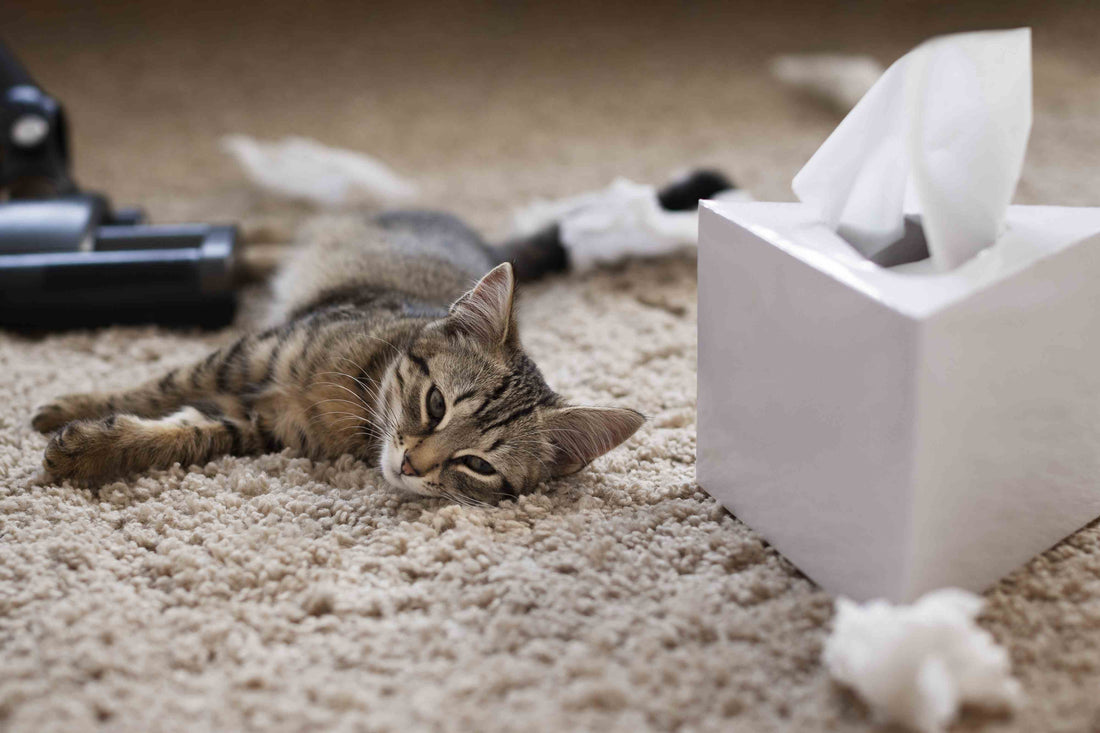Cat Peeing on the Bed? Here's How to Fix It for Good

If your cat is peeing on your blanket or bed, don't take it personally. It's not a sign of revenge or bad behavior—it's usually a sign that something is wrong with the litter box setup. The good news? With the right adjustments, you can help your cat fall back in love with their litter box.
1. The Litter Box Itself Matters Most
Whether the problem starts from discomfort, stress, or a dirty box, the solution is the same: make the litter box more appealing than your blanket.
- Cleanliness is key. The most common reason cats avoid the box is because they think it's dirty. Remember, you see cleanliness with your eyes; your cat judges it with their nose. Even if it "looks" fine, odor may still linger.
- Covered boxes trap odors. If you're still using a traditional litter box, keep in mind that covered designs often trap odors. While the lid may reduce smells for you, it makes the box less pleasant for your cat. For better ventilation and comfort, switch to a semi-open or fully open litter box.
- Size matters. Shape and color don't matter to cats—but size does. The box should be at least 1.5 times your cat's body length (excluding the tail), giving them room to turn and dig comfortably.

2. Keep the Litter Truly Clean
Imagine using a toilet that hasn't been flushed twice—that's how your cat feels if there are multiple clumps left in the box.
- Scoop immediately after your cat uses the litter box if you're home.
- If you're away often, consider adding more litter boxes so your cat always has a clean option.
- Cats are naturally clean. If they see your blanket as "cleaner" than their litter box, that's where they'll go.
💡 Tip from Petsgofun: A Self-Cleaning Litter Box like CZ72 can help keep things consistently fresh by automatically removing waste after each use, ensuring your cat always finds a clean spot.

3. Litter Box Placement
Cats don't need hidden bathrooms. Indoors, your entire home feels safe to them.
- Place litter boxes in areas your cat feels comfortable, not tucked away in hard-to-reach corners.
- Keep them away from food and water bowls.
- If your home has multiple floors, place at least one litter box on each floor your cat frequents.
4. What Not to Do
Many well-meaning owners try methods that don't work—or even make the problem worse:
- Scolding or "teaching" at the scene. Cats don't associate being caught with doing something "wrong." They only learn that being near you while peeing feels stressful.
- Putting accidents back into the litter box. Unlike dogs, cats don’t need urine or feces as a cue. In fact, leaving waste inside makes the litter box seem dirtier.
- Forcing or carrying your cat into the litter box. Your cat already knows where the box is. Forcing them in can make them resent the box.
- Scaring them mid-pee. You may stop them once, but fear often leads to more accidents in random places—and damages your bond.
5. The Real Solution
The only lasting fix is adjusting the litter box environment:
- Right size.
- Clean litter.
- Comfortable placement.
- Enough boxes for your space and household.

If your cat still avoids the litter box after all this, consult a vet—sometimes urinary infections or other medical issues are the root cause. Don’t punish your cat. Just make the litter box the best bathroom in the house—and with the help of the Petsgofun Self-Cleaning Litter Box, your blanket will finally stay safe.
